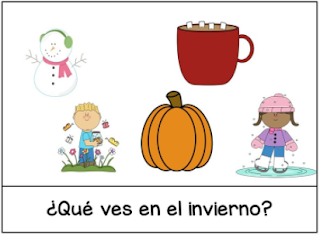I read stories in my language classes as often as possible. It is a great way to provide comprehensible input for novice learners. Each page is a small chunk of language with an image or illustration to aid in comprehension.
But I never just read a story to my students. I am
constantly involving them in the story using questioning in the target language.
Here is how…
In this example lesson, my focus is on the seasons
vocabulary. I want to repeat the seasons vocabulary as much as I can to help students
acquire these new words.
I am using Nearpod to present my story (if you want to learn how to use Nearpod, get my how to guide here), but you can also do this questioning verbally while holding a storybook in your hands in front of the class.
The first page of my story presents the season with an image to illustrate. I read the page and then I start brainstorming … how can I repeat the seasons vocabulary word in a question they will understand and know how to respond to?
My students know the weather vocabulary well. I decide to
ask about the weather.
I have different types of questioning I can do.
Question type 1: I can ask a yes / no question. This is a great way for students to demonstrate comprehension without having to say much in the target language. This works well if they don’t have the language ability to respond to a question where a full response is necessary.
Question Type 4: I can ask a question which requires a full answer in the target language. I do this when I am confident the students know this vocabulary well enough to be able to provide a full response. BUT … if I see them struggle a bit and can tell it is on the tip of their tongues but they can’t quite get it out, I will switch to an either / or or yes / no question to help them out.
Ready to try out a storytelling lesson? Check these out...

























